#Diamond Jubilee of Queen Victoria
Explore tagged Tumblr posts
Text
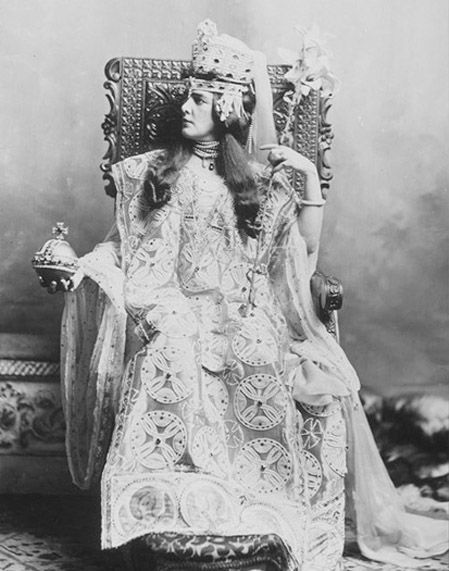
The Devonshire House Ball or the Devonshire House Fancy Dress Ball was an elaborate fancy dress ball, hosted by the Duke and Duchess of Devonshire, held on 2 July 1897 at Devonshire House in Piccadilly to celebrate the Diamond Jubilee of Queen Victoria. Due to the many prominent royals, aristocrats, and society figures who attended as well as the overall lavishness of the ball, it was considered the event of the 1897 London Season.
Guests in Costume Photographed by the Lafayette Studio of Bond Street, London.
Lady Randolph Churchill (1854-1921)
as Empress Theodora of Byzantium
Lady Randolph Churchill, née Jennie Jerome, mother of Winston Churchill, was reputed to be "one of the most beautiful of the many beautiful American women who have married Englishmen of rank."
By 1897 she was already a widow and it was said that she had been a mistress of Edward, Prince of Wales. Her discretion about this affair was summed up in her own memoirs: "...there may be some to whom these Reminiscences will be interesting chiefly in virtue of what is left unsaid."
Info by Wikipedia and http://www.rvondeh.dircon.co.uk/
#Devonshire House Ball#1897#Diamond Jubilee of Queen Victoria#London#Lady Randolph Churchill#Winston Churchill`s mother#costume ball#legendary#fancy dresses#photography#Lafayette Studio
4 notes
·
View notes
Text

The Diamond Jubilee Regatta at Spithead - by Charles Edward Dixon
#Queen Victoria#Diamond Jubilee#Royal Navy#26 June 1897#dreadnought#sailing ships#Spithead#Portsmouth#fleet#British Empire#Charles Edward Dixon#English painters#UK
38 notes
·
View notes
Text
Incidentally it took historical context to date Dancing Men, but I’m not nearly as mad about that as I am at having to look up publication dates and do maths for Missing Three-Quarter.
#sherlock holmes#acd canon#i reject your chronology and substitute my own#july 1898 in case you were wondering#because the cubitts have been married a year and they met because mr cubitt was in london ‘for the jubilee’#which has to be queen victoria’s diamond because her golden was in 1887#and it’s july because cubitt says the messages started with a letter last month in june
8 notes
·
View notes
Text
By the time of Queen Victoria's Diamond Jubilee in 1897, few Britons remembered any other monarch. The British Empire had reached the pinnacle of world power and influence on every continent.
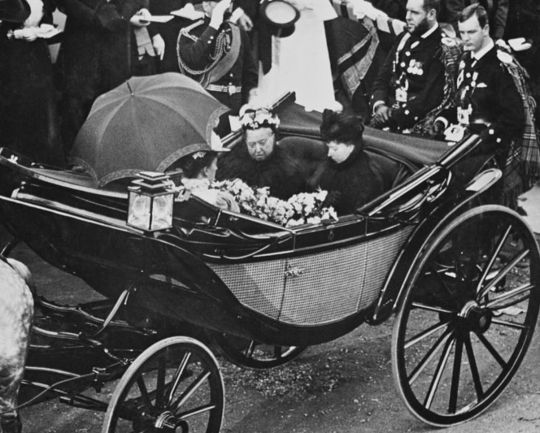
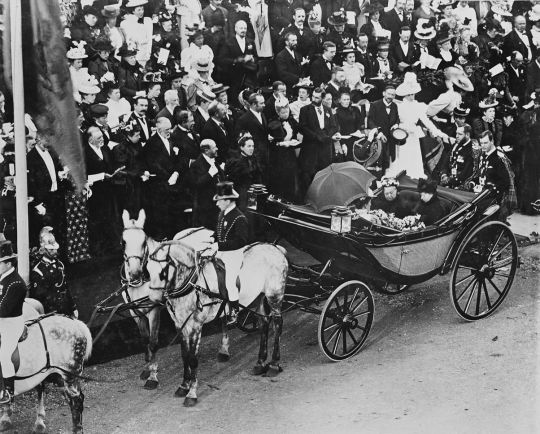
Photograph showing Queen Victoria driving in an open-top landau carriage with her daughter, Princess Beatrice, and granddaughter, Princess Helena Victoria of Schleswig-Holstein. The photo was taken in Cowes on the Isle of Wight, on 27th July 1897 as part of her jubilee celebrations.
Queen Victoria wrote of the day in her journal:
“Very fine morning, still very windy. - After breakfast was photographed in the dress & bonnet I wore on June 22d. Then I sat in the tent. — Tea out with Beatrice, Thora & little Leopold, after which drove across the Ferry to West Cowes, with the 4 ladies following in a 2’ carriage, the Gentlemen having gone on before as yesterday. The town was beautifully decorated with flags & flowers. & quantities of flags hung across the streets. On the Parade which has been widened a stand had been erected, where all the leading people of the town were assembled. There was a Guard of Honour of the Isle of Wiaht Volunteers, & men of the Fire Briaade were posted round the stand. I had an escort of the Hants Carabineers. A choir of 200 from different churches & dissenting Chapels sang the special Hymn, but were placed too far off to be well heard. An address from the Town Council was then presented & I said a few words of thanks for the hearty reception that had been given me, - spoke with affection of my Island Home. Drove as far as Egypt point & then back again through the town. A number of old people were drawn up in the churchyard, & a great many people were out. On the Esplanade the Pipers were stationed & played again. - Louisa A., Bertha L., Sir Norwell Salmon, Sir E. Commerell, Sir F. Edwards, Capt: Acland, & Fritz Ponsonby dined. -“
Swipe to see the full image, which possibly shows the choir the Queen described.
#Queen Victoria#Diamond Jubilee#British Empire#monarchy#UK#Princess Beatrice#House of Hanover#Isle of Wight#brf#Princess Helena#Queen's journal#British history#1897
39 notes
·
View notes
Text
I hadn't the heart to write last night; that terrible record of Jonathan's upset me so. Poor dear! How he must have suffered, whether it be true or only imagination. I wonder if there is any truth in it at all.
Mina writes this as a response after reading Jonathan's journal all by herself, without any outside influence, and oh how beautifully merciful it is.
This book, this novel came out in 1897 right in the middle of queen Victoria's diamond jubilee in england. The first successful self driving taxis go through the streets, the public has noticed the national decline as urban poverty had rised more, and the Lunacy act has been introduced just seven years ago (1890) in which the only people who could ever have access to victorian england's psychiatric treatment were the certified as "mentally insane", which then were admitted to an asylum* shortly after.
(*different rules for different socioeconomical classes apply.)
Of course this being victorian england meant that stigma, and prejudice ran rampant after the poor people subjected to these treatments in order to place them outside of what was deemed polite society. Moreso when the actual label given to you once you were admitted was "pauper lunatic", or whatever your doctor decided for you if you were wealthy enough to escape the label. In all of this social climate, this stigma, this prejudice, here comes Mina, recently married woman to Jonathan who comes from a harrowing experience marked by a brain fever coming all the way from Transylvania.
It was not recommended to marry men like Jonathan because of his illness, and Mina did it anyway. The mere concept of ptsd (and everything that comes with it) is only applied to soldiers who are thrown into the psychiatric system by their families, yet Mina guided and cared for Jonathan after he had a panic attack without caring who might see. Jonathan wrote about the most horrifying events that a young person could see done by a supernatural monster, and Mina (despite being on the fence about the truth of the journal) expresses empathy for his suffering.
For Mina, it doesn't matter if what is written on the journal is real or the terrified ramblings of her traumatized husband, she knows that what matters is that Jonathan suffered greatly, and that she has to help him. Even if Mina debated to herself about the possibilities of everything, she decides that she can't just do nothing with all of this information, she can't simply ignore, so Mina wipes out the typewriter... Just in case.
#This is the best response to the horrors without dismissing them which makes Mina the best woman ever#dracula daily#dracula#mina harker#mina murray#jonathan harker#jonmina#historical context
359 notes
·
View notes
Note
You have done cheeses. How about dessert.
Ooh, good idea.
See, the thing about Victorian food is that a lot of it sounds pretty unappealing from the vantage point of the 21st century. There were a lot of overboiled vegetables and stodgy meals designed to get you through winters with no central heating.
But Victorian desserts? Much more reliably delicious. So I can restrict myself to the desserts that these characters might actually have eaten. No tiramisu (1960s) or banoffee pie (1971).
Starting off with an easy one, RM Renfield is the traditional Scottish fruit slice (which I already highlighted in my food guide to Dracula) known as flies graveyard. I'm going to trust that one doesn't need any additional exploration.
Lucy Westenra is light (literally: "Lucy" means light), pretty, and appealing to small children. OK, admittedly the eater-eaten relationship goes the other way around with the small children vs Lucy-as-dessert, but I think it still works. She's a bombe glacée, a spherical ice-cream dessert that first appeared on restaurant menus in the 1880s.
I had a fun browse through Dutch desserts before I found the perfect one for Abraham van Helsing. He's the old man of the story, but he's still a little bit spicy and a little bit divisive - much like anise, which flavours Dutch oudewijvenkoek, or old wives' cake.
For Quincey Morris, there could only be one option. He's from Texas, y'all, he is obviously peach cobbler.
Continuing with the suitors, the obvious answer for Arthur Holmwood would be a dessert associated with wealth and privilege - perhaps Eton Mess, traditionally served at the annual cricket match between Eton and Harrow Schools, and first mentioned in print in 1893. But Eton Mess is a light, sweet, inconsequential sort of dessert and that just doesn't seem right for Arthur. Instead, I'd associate him with a rich, indulgent, traditional, solid plum pudding.
Jack Seward is in some ways the most modern of the suitors. Also the most highly strung. He's cherries jubilee, a brand-new dessert in 1897 as it was (probably) created that year for Queen Victoria's Diamond Jubilee. It's full of liqueur (suitably for Jack, who's full of chloral) and it gets flambéed at the table.
I have to admit that I struggled with Jonathan Harker. Maybe I just love him too much to caricature him, you know? But what I came down is that he needed to be a beloved treat, available on menus across the UK, not wildly expensive, not wildly luxurious. And also, Jonathan goes through a lot of trials and drinks a lot of tea in this novel. Jonathan is a toasted teacake.
As for Mina Harker née Murray, it seemed appropriate that she should be a similar sort of dessert to her husband. So he's a bun with dried fruit and she's a bread with dried fruit. Specifically, she's an Irish soda bread (since Murray is an Irish surname) that is known either as Spotted Dog or - more suitably for Mina - railway cake.
294 notes
·
View notes
Text




Eastgate Clock, ChesterThis is the second most photographed clock in the UK after the Elizabeth Tower and Big Ben and stands on Eastgate, Chester. The red and gold clock was added to celebrate Queen Victoria's diamond jubilee in 1897 but not unveiled until her 80th birthday in 1899.
69 notes
·
View notes
Text
List of the jewels left to the Crown by Queen Victoria
~~ In celebration of the Queen being born on this day ~~
The identified Ones
(1) Diamond Diadem (2) The Oriental Tiara (3) Coronation Necklace

(4) Festoon Necklace (the diamonds used to create this necklace were heirlooms of the crown. (5) Queen Anne and Queen Caroline’s Necklaces (6) The Duchess of Kent’s Amethyst and Diamond Parure

(7) Three bow-shaped diamond brooches (8) Six diamond brooches in the shape of wheat-ears (9) A brooch with a round 313-carat tiger’s eye

(10) Coronation Earrings (11) Queen Victoria’s Stud Earrings (12) Queen Victoria’s Fringe Earrings

(13) Prince Albert’s Brooch (14) Queen Victoria’s Golden Jubilee Necklace and Earrings (15) Queen Victoria’s Diamond Jubilee Brooch

#queen victoria#queen elizabeth ii#heirlooms to the crown#multi#thejewelcatalogue#british royal family#otd
89 notes
·
View notes
Text
Devonshire House Ball, 1897
The Devonshire House Ball or the Devonshire House Fancy Dress Ball was an elaborate fancy dress ball, hosted by the Duke and Duchess of Devonshire, held on 2 July 1897 at Devonshire House in Piccadilly to celebrate the Diamond Jubilee of Queen Victoria.


The Prince and the Princess of Wales (Edward VII and Alexandra)

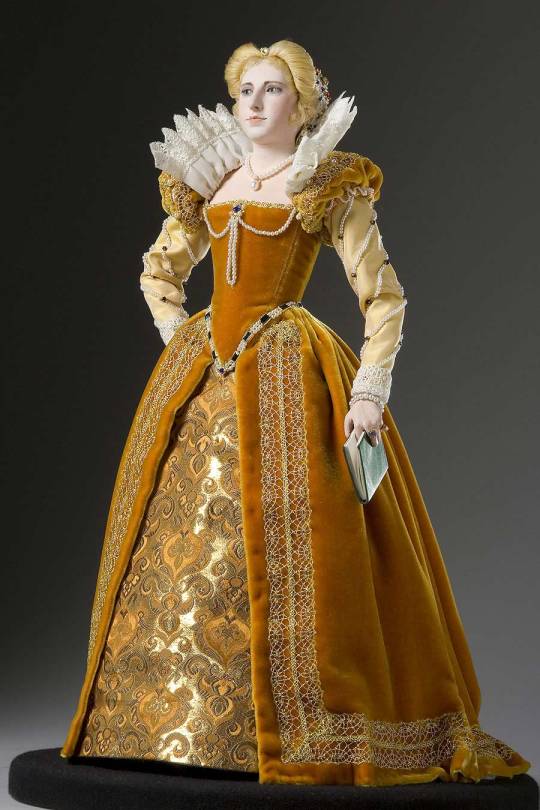
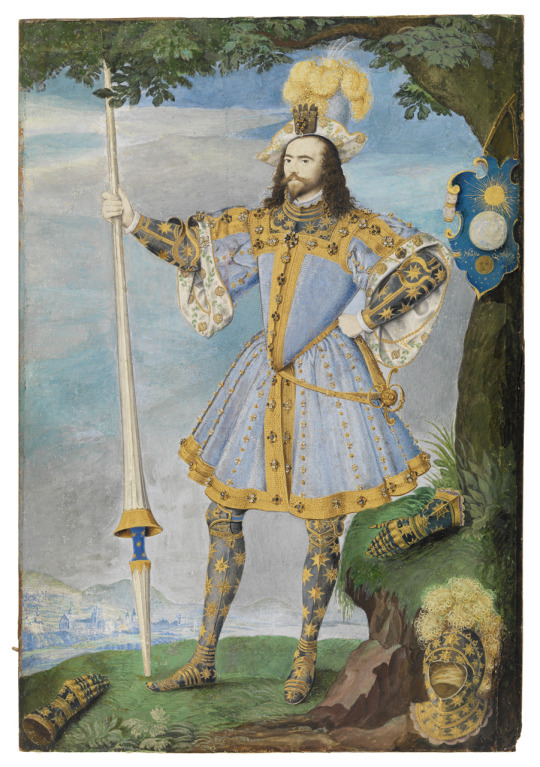
The Duke and the Duchess of York (George V and Mary)

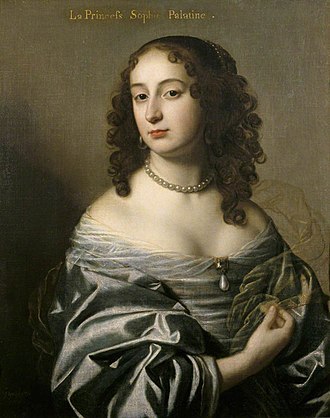
Princess Mary Adelaide (the mother of Mary)
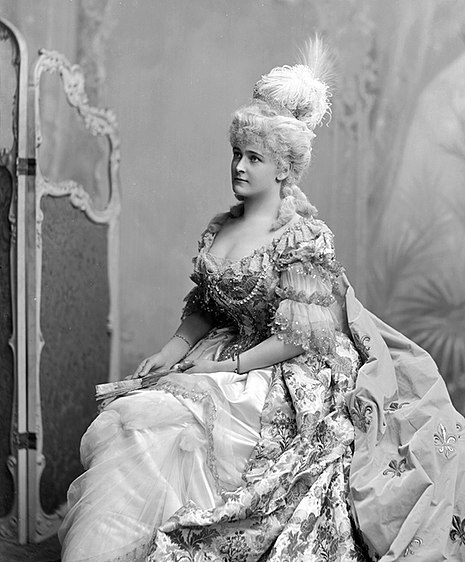

The Countess of Warwick dressed as Marie Antoinette
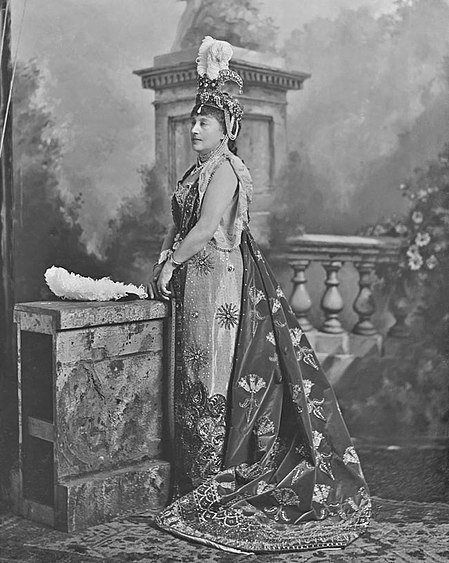

The Duchess of Devonshire
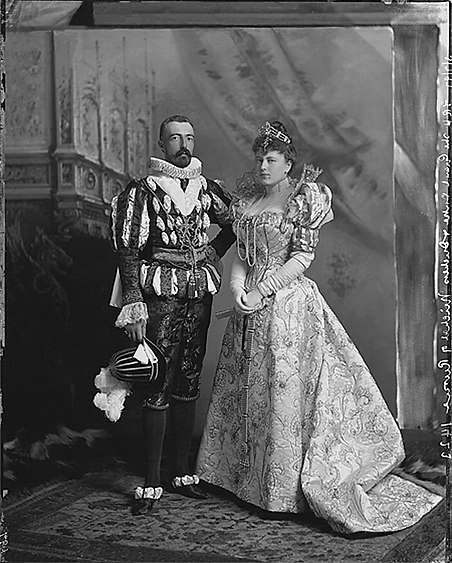


Grand Duke Michael Mikhailovich of Russia and his wife
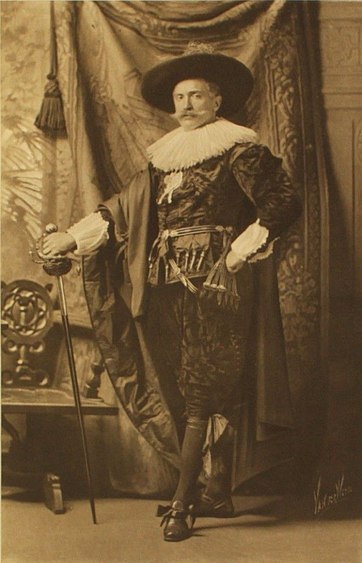
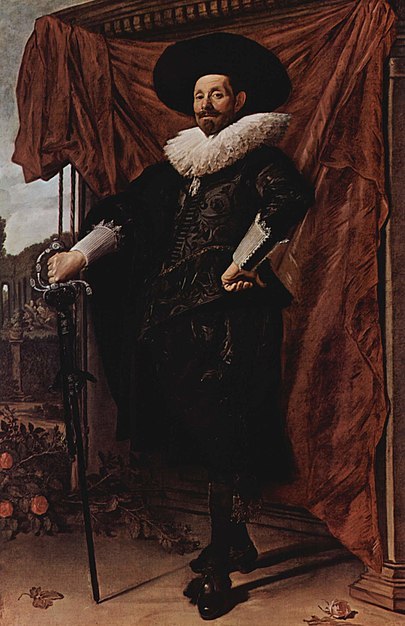
The Viscount D'Abernon


Daisy, Princess of Pless dressed as Cleopatra
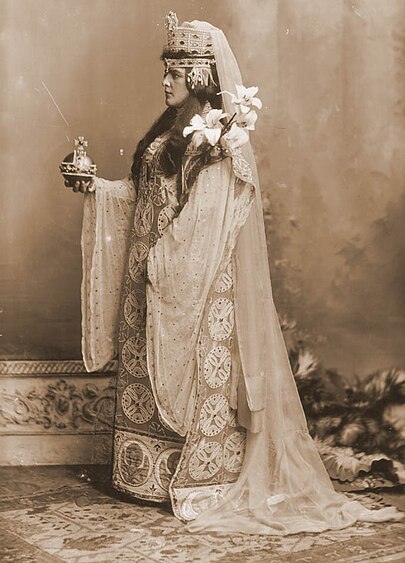
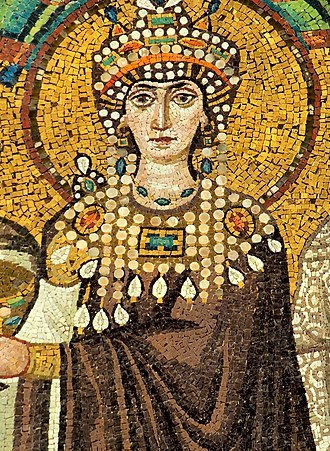
Lady Randolph Spencer-Churchill in a byzantine dress
#united kingdom#uk monarchy#queen mary of teck#british royal family#king george v#england#cleopatra#byzantine#queen alexandra#edward vii#royals#royal style#brf#queen victoria#duchess of york#duke of york#prince of wales#princess of wales#russian royal family#devonshire#ukfanpage
27 notes
·
View notes
Text
Royal Tiara Challenge 2024: Favourite All Diamond Tiara

The Baden Fringe Tiara
In an attempt to include more than 7 tiaras in this challenge, the Baden fringe is my second favourite all diamond tiara after the Girls. A tiara that could also be used for self-defence, it was a wedding present for Queen Victoria of Sweden in 1881. Her great-great-granddaughter Crown Princess Victoria wears this tiara frequently and looks incredible every time! She last wore it in September 2023 for her father’s golden jubilee celebrations.
15 notes
·
View notes
Text
The Dancing Men
Originally published in 1903, this is the third story in Return
South Africa was undergoing a gold rush at the time.
North Walsham is located 15 miles north of the city of Norwich. The last major battle of the 1381 Peasants' Revolt took place nearby.
North Walsham was served by two railway stations, one of which closed in 1959 along with two whole lines it was on. North Walsham Main, the one that survives just as North Walsham, was about 40 minutes from Norwich, itself around two and a half hours from London. Today, the whole journey from Baker Street could be done in around in three hours and ten minutes.
"The Jubilee" is generally taken to refer to Queen Victoria's Diamond Jubilee of 1897, marking 60 years of her reign. It was a massive occasion, although Victoria's arthritis limited her activities with the service of thanksgiving held outside St Paul's Cathedral.
The German Ocean was another name for the North Sea.
The New York Police Department was formed in 1845 - it had just undergone major reforms under the leadership of Theodore Roosevelt i.e. the future President.
Chicago had held a world's fair in 1893, recovering from the 1871 fire that had devastated the city. It also had major organised crime problems, with political machines, rampant corruption and red-light districts.
The police were required by this point to warn criminals that their words would be used against them in court.
The modern England and Wales "starting point" for a minimum term of murder using a firearm is 30 years before someone can be considered for release on licence. This can be adjusted up or down based on the circumstances.
As mentioned elsewhere, the Home Secretary could commute a death sentence to life imprisonment - penal servitude meaning "hard labour".
22 notes
·
View notes
Text

REMEMBRANCE OF THINGS PAST: The German soprano Sophie Sedlmair (1857-1939). At Covent Garden she sang Isolde in 1897 at the Diamond Jubilee celebrations for Queen Victoria. And what a ROYAL cast it was: Jean de Reszke sang the title rôle, his brother Edouard was Marke. Marie Brema was Brangäne, David Bispham sang Kurwenal. Anton Seidl conducted.
#classical music#opera#music history#bel canto#composer#classical composer#aria#classical studies#maestro#chest voice#Sophie Sedlmair#soprano#Sophie Offeney#Covent Garden#Royal Opera House#classical musician#classical musicans#classical history#history of music#historian of music#musician#musicians#diva#prima donna#Tristan and Isolde#Tristan und Isolde#Richard Wagner
2 notes
·
View notes
Text

Queen Victoria
Artist: Alexander Melville (British, 1823–1892)
Title: Queen Victoria of England
Genre: Portrait
Date: 1845
Medium: Oil on Canvas
Collection: Herzogliches Museum Gotha
Queen Victoria
Victoria (Alexandrina Victoria; 24 May 1819 – 22 January 1901) was Queen of the United Kingdom of Great Britain and Ireland from 20 June 1837 until her death in 1901. Her reign of 63 years and 216 days- which was longer than those of any of her predecessors - constituted the Victorian era. It was a period of industrial, political, scientific, and military change within the United Kingdom, and was marked by a great expansion of the British Empire. In 1876, the British Parliament voted to grant her the additional title of Empress of India.
Victoria was the daughter of Prince Edward, Duke of Kent and Strathearn (the fourth son of King George III), and Princess Victoria of Saxe-Coburg-Saalfeld. After the deaths of her father and grandfather in 1820, she was raised under close supervision by her mother and her comptroller, John Conroy. She inherited the throne aged 18 after her father's three elder brothers died without surviving legitimate issue. Victoria, a constitutional monarch, attempted privately to influence government policy and ministerial appointments; publicly, she became a national icon who was identified with strict standards of personal morality.
Victoria married her first cousin, Prince Albert of Saxe-Coburg and Gotha, in 1840. Their nine children married into royal and noble families across the continent, earning Victoria the sobriquet "grandmother of Europe". After Albert's death in 1861, Victoria plunged into deep mourning and avoided public appearances. As a result of her seclusion, British republicanism temporarily gained strength, but in the latter half of her reign, her popularity recovered. Her Golden and Diamond jubilees were times of public celebration. Victoria died at Osborne House on the Isle of Wight, at the age of 81. The last British monarch of the House of Hanover, she was succeeded by her son Edward VII of the House of Saxe-Coburg and Gotha.
#portrait#queen victoria#alexander melville#british painter#white dress#crown of flowers#landscape#drapery#jewelry#18th century art#british fashion#18th century england#british monarchy#british royals#british queen#young queen victoria#queen of the united kingdom#united kingdom of great britain and ireland#victorian era
5 notes
·
View notes
Text
Regarding the fictional Sam Gamgee’s link to the First World War, Carpenter’s Biography quotes Tolkien as saying, “My ‘Sam Gamgee’ is indeed a reflexion of the English soldier, of the privates and batmen I knew in the 1914 war, and recognized as so far superior to myself.” A batman, in military parlance, was a soldier who (as well as being required to fight) was tasked with looking after an officer’s kit, cooking, and cleaning. Tolkien’s phrasing in the letter sent to Minchin is different, and very interesting too: “My ‘Samwise’ is indeed (as you note) largely a reflexion of the English soldier—grafted on the village-boys of early days, the memory of the privates and my batmen that I knew in the 1914 War, and recognized as so far superior to myself.” It gives the extra dimension that in portraying Sam, Tolkien had also drawn on memories of lads from the rural outskirts of Birmingham, where he had lived between the ages of three and eight. This dovetails well with his statement elsewhere that the society of the Shire is “more or less a Warwickshire village of about the period of the Diamond Jubilee” (Letters p. 230)—that is, a village like Sarehole in 1897, Queen Victoria’s 60th year on the throne and Tolkien’s fifth on earth. Amid all Tolkien’s astonishing inventiveness, and alongside the vast knowledge of matters mythological and medieval that he poured into his legendarium, this is a point too easily overlooked: contemporary life, especially the life he knew in his formative years, was a powerful well-spring of creativity in The Lord of the Rings. Tolkien’s comment to Minchin also provides support for a point I have made in various talks on how the Great War shaped The Lord of the Rings. By silently linking his hobbits with the boys of 1901, who had grown into the young men of 1914, Tolkien was able to draw directly upon the war into which he and those men were then hurled. He had seen, and felt, how war could change those who went through it. Many of the dangers he describes in The Lord of the Rings may be fantastical, though many are not and others are only symbolically so. But the fear, the resourcefulness, the demoralisation, the courage, the sorrow, the innocent laughter in the face of dreadful odds: all these things he had known, and he infused his fiction with them. This, and memories of those rural roots, bring the hobbits vividly to life.
#Tolkien#Tolkien studies#j.r.r. tolkien#samwise gamgee#tolkien and the great war#wwi#the first world war#first world war#tolkien influences#tolkien's childhood influences#tolkien's contemporary influences#john garth
18 notes
·
View notes
Text

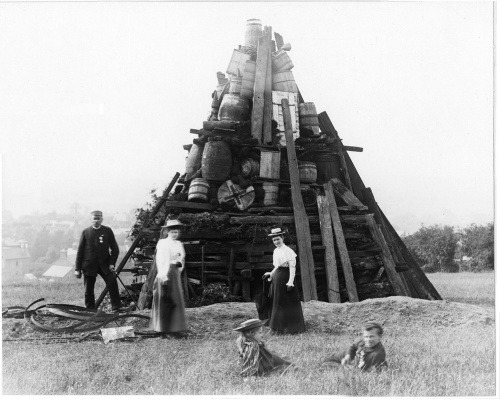
Britain has a long history of beacon lighting spanning many hundreds of years. Beacons have been lit on village greens, castle battlements, church towers, farms, beaches, front gardens, car parks and mountain tops to celebrate Royal Weddings, Jubilees and Coronations.
In 1897 beacons were lit nationally to celebrate Queen Victoria’s Diamond Jubilee. (She reigned for a total of 63 years.) In 1977 and 2002 beacons were lit to celebrate The Queen’s Silver and Golden Jubilees. On Monday 4th June 2012, the aim is to light over 2,012 - perhaps as many as 4,000 – beacons, from Tonga to the Falkland Islands and Malta to Kenya. And the network of beacons that will criss-cross the UK, placed on historic landmarks, hill-top vantage points and famous mountains, will include Ditchling Beacon.
Ditchling Beacon is an Early Iron Age contour hillfort positioned on the Downs just south of the village of Ditchling with commanding views of the Weald to the north. It is one of the 139 original anchor-chain beacons situated around the country and has been used many times for occasions of unity and celebration, but also as a communication tool to warn of impending invasion and coastal attack.
The most notable occasions were in the 16th century when raiders from France regularly struck the Sussex coast and Brighton. These attacks reached their height in June 1514 when the French, led by Admiral Prégnant (nick-named Prior John), set fire to virtually all the buildings in Brighton’s old town, with the exception of St Nicholas’ Church. They were eventually driven off by archers from across the county who were alerted by a warning beacon on the Downs. There were further raids on Brighton in 1545, but as before, the French were repelled by the large numbers who gathered on the cliff, attracted by the beacon. In 1587, Ditchling was part of the same chain of beacons, designed to provide warning of the long anticipated attack by the Spanish.
http://www.thepostmagazine.co.uk/brighto.../ditchling-beacon
9 notes
·
View notes
Text

George Sherwood Hunter (British artist) 1846 - 1919
Jubilee Procession in a Cornish Village, June 1897
oil on canvas
130 x 216 cm. (51.18 x 85.04 in.)
Royal Cornwall Museum, Truro, United Kingdom
© photo Royal Cornwall Museum
Catalogue Note ArtUK
George Sherwood Hunter was born in Aberdeen and visited Newlyn around the turn of the century. He settled there permanently in 1902. This painting shows the procession of girls and women with Chinese lanterns along the front at Newlyn to mark Queen Victoria's Diamond Jubilee in 1897. The Royal Cornwall Gazette claimed in its issue of 24 June 1897 that 'there really is but one topic of this week – Jubilee!'
Catalogue Note Royal Cornwall Museum
This painting is a wonderful record of a lantern procession held to commemorate Queen Victoria’s Diamond Jubilee in 1897. The participants, all dressed in white, are shown snaking their way through a Cornish fishing village, possibly Newlyn or Mousehole.
The painting underwent considerable conservation and restoration in 2010 which meant that, for the first time in over 100 years, the exquisitely painted faces of those in the procession could be seen in all their subtle glory. The delicate beauty in the children’s faces is made all the more remarkable when one takes into consideration the very limited palette Hunter works with.
Jubilee Procession in a Cornish Village, June 1897 can be considered as Sherwood Hunter’s masterpiece.
4 notes
·
View notes